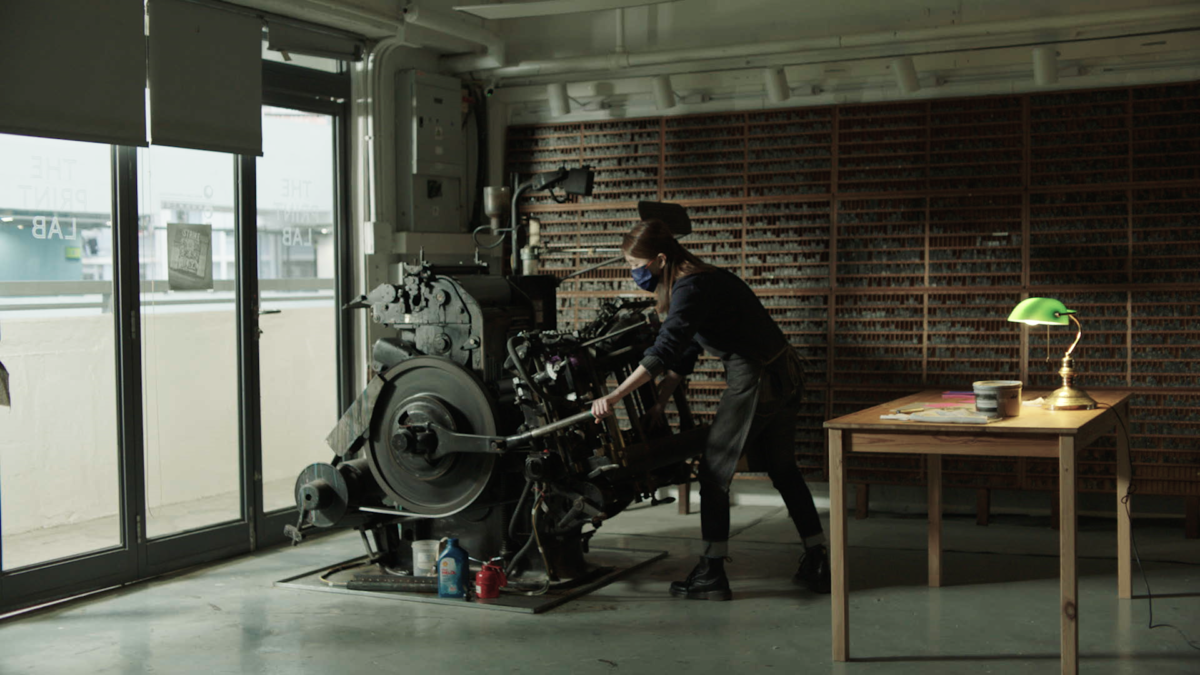Exploring a Hidden Part of Hong Kong’s Artistic Identity Through Printmaking
Hong Kong printmakers quietly documented everyday life in the city for decades. Juxtaposed with printmaking through the decades and into the 21st century, their work is now the subject of two ongoing exhibitions at the Hong Kong Heritage Museum:
- “Between the Lines – The Legends of Hong Kong Printing” (7 October 2020 – 26 July 2021)
- “20/20 Hong Kong Print Art Exhibition” (7 October 2020 – 26 July 2021)
20/20: the Hong Kong Print Art Exhibition
“20/20” features a treasure trove of prints from the 1940s up to 2020. It celebrates the 20th anniversary of the Hong Kong Heritage Museum and the Hong Kong Open Printshop and is structured around 20 questions about various printmaking processes.
Each question is countered with a set of artworks, accompanied by descriptions of the intricate techniques involved. Printmaking involves labor-intensive processes such as gouging, scratching, and stenciling images on various surfaces to be pressed on. The result is compelling works of art, as these exhibitions reveal. Work from emerging names such as illustrator and screen printer Onion Peterman stand alongside pieces by established figures in Hong Kong art history such as the late modernist painter Gaylord Chan who passed away in June last year.
“Hong Kong art has actually been very interesting for some time, but we have not had enough exhibitions of this kind that showcase achievements in different media,” says David Clarke, honorary professor of art history at the University of Hong Kong and an artist participating in the “20/20” exhibition. He swapped the traditional printing press for a photocopier when working on ‘People I don’t know who have the same name as me’, a piece exploring ideas around identity and the sense of self. This piece came out of searching for images of people online who had the same name as him; he photocopied them repeatedly until he was left with a series of distorted images. “Rather than working in a studio, I do a kind of a hit-and-run approach of making my art in everyday office spaces,” Clarke says. “What interests me is to engage with technologies of mass reproduction.”
Contemporary printmaking in Hong Kong
“It is important to put printmaking in a contemporary context,” says Yung Sau-mui, a lithograph artist who is also programme director of the Hong Kong Open Printshop. She is the curator of the “Between the Lines” exhibition. “This connects it to the new generation so it’s not a relic [of the past].”
In ‘Mapping’, Yung is also experimental in her approach to her artwork, taking printed images of Hong Kong streets from maps in the Hong Kong Guide as well as Google Maps, manipulating them using Adobe Photoshop, then transferring them to aluminum plates to make lithograph prints. These works delve into Hong Kong’s colonial history as reflected in the names of the city’s streets and neighborhoods.
A note on lithography: lithography relies on delicate chemical processes to form a printed image, working with only one color at a time. Traditional lithograph printmakers first wash and grind a slab of limestone before using oil-based materials, like crayons, to draw an image on its surface, after which a chemical solution is applied. The chemicals develop the image on the stone before it’s inked and pressed. The process is repeated to layer different colors on the print. These Days, aluminum plates are generally used to make lithograph prints instead of the limestone slabs.
Yung was inspired to mount the show following exploration into the origins of printmaking in Hong Kong, leading to how lithography arrived in China from Europe.
For Yung, discovering a set of Chinese moveable type was the highlight of curating this show. The set had been crafted over decades in Hong Kong and then sold for use in several countries abroad, including the Netherlands, Russia, and Australia.
“None of us had heard about the story of the Hong Kong movable type,” she says. “It was cast in Hong Kong in the mid-19th century at Anglo-Chinese College in Central [renamed Ying Wa College in 1914]. And because it was the first complete set [of its kind], it had a really significant impact on the rest of the world.”
This set of moveable type helped build a bridge of recognition and understanding between China and the rest of the world, and it was used to print bilingual texts. A duplicate set of the Hong Kong Type is displayed in the “Between the Lines” exhibition.
Photo: An Original Heidelberg Platen Press in use at the Hong Kong Open Printshop
Please Support us on Patreon!

Moreover, starting with the pledge level of $3, you will get a digitized vintage book about bookbinding, book history, or book arts each month from us!
These pledges help iBookBinding to continue its work and bring more information about bookbinding and book arts to you!


